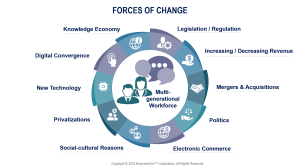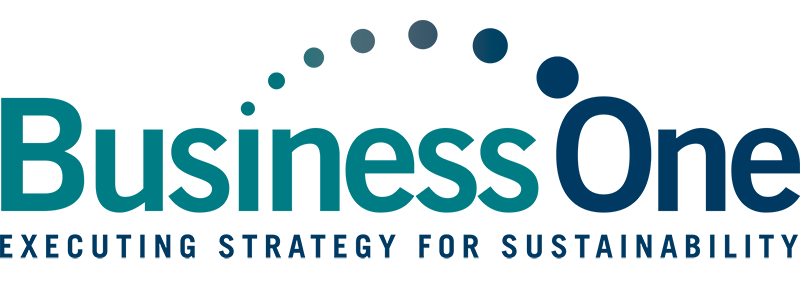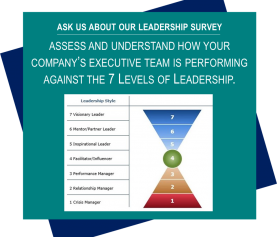Tips to Manage a Multi-generational Workforce

Today’s psychological contract for a high-performance culture is not the result of one or two things. Workplace dynamics are complex.
Today more than ever, organizations must adapt their environment to support a multi-generational workforce.
The context in which your company operates will greatly impact who you recruit, how you train and retain employees, how you enable change and evolve over time.
This context is enabled by your culture – how things get done, how decisions get made, what works and does not work, behaviors and reward and recognition practices – all which is underpinned by generational differences such as perspective, experience, knowledge and skills; key factors which support diversity and performance.
Studies show that characteristics that are attributable to each generation (Traditionalists, born between 1925 and 1946, Baby Boomers, born between 1946 and 1964; Gen X, born between 1965 and 1976; Gen Y / Millennials, born between 1977 and 1997; and Gen Z, born after 1997), are the product of shared life experiences within each group. Family and parental values and the state of the economy when an individual was growing up, labor market conditions when they entered the workforce, significant political and world events, and education have all helped shaped a generation.
Take a quick look around and you will see a mesh of global perspectives and generational experience. For example; workers born in the mid-1950s to the 1970s place a greater emphasis on company tenure and loyalty whereas those born in the ‘80s and 90s’ may see one job as a stepping stone to another.
What does all this mean?
The approach needed to manage employees today for one or two generations may be different from those needed to manage another. It is the “social side of a successfully executed strategy” that demands an understanding and appreciation of generational differences and needs.
Companies need to recognize and acknowledge the strengths, work-styles, needs and potential of each group and focus more on adapting and appreciating those differences rather than expecting groups to conform to a specific management style or culture.

With the knowledge driven economy and Industry 4.0, culture change is a competency which cannot be mismanaged among a multi-generational workforce.
Today’s general shift is a profound change to a company’s DNA as they experience a rapid decline in Baby Boomers due to retirement, an increase in Gen X looking for leadership positions and Millennials seeking workplaces driven by purpose and continuous learning.
5 tips to help you manage a multi-generational workforce
Tip #1 Recognize and respect differences among generations
We need to acknowledge that each generation is unique, and what worked in the past won’t work for the workplace of the future.
Each generation has its own values, priorities and experiences. We often stereotype others without really taking the time to truly understand where they are coming from. It is important to understand that collectively they have preferences in how they communicate, perform work, embrace change and learn.
Management and employees need to understand these differences and recognize the value that each generational group provides without ignoring individual strengths. We should understand what makes our individual generations different from others and then look to understand and recognize where someone else may be coming from.
Tip #2 Put yourself in the other generation’s shoes
Thinking in the perspective of each generation’s values and experiences allows us to be more empathetic towards our colleagues and within our teams.
Look to enhance manager and employee training specifically around empathy and caring for others.
If we can understand what each generation values, it becomes easier to understand why individuals respond as they do in certain situations and helps us to respond appropriately. Empathy helps drive a culture of listening and respect which can help change behaviour and build stronger relationships.
Tip #3 Be patient and willing to adapt
Each of us needs to be willing to adapt our personal leadership, teamwork, and communication styles to that of our peers and team members.
It is important that we are open to the suggestions and perspectives that each generation brings forward. Together we can better determine if it’s the right approach for the given situation, be more “inclusive” of the team, the organization and/or our customers and solve the problems of today for tomorrow.
For example: For a marketing or IT project team, collaboration and instant messaging tools must be readily available and authorized for use by not only Millennials but Gen X leaders. At the same time, Millennials need to be open to feedback and coaching by Baby Boomer and Gen X mentors and vice a versa. Millenials are also driven by flexible working arrangements, so take to the time to ensure there is a policy that supports this.
Tip #4 Find the right organizational balance
To attract, recruit and retain the best and brightest workers, ensure career paths and succession plans are in place which support diversity and generational requirements from Board Member to student.
An organization’s HR Strategy will need to be inclusive of a multi-generational workforce.
While the hype appears to be around Millennials, it is important to focus on the organizational dynamics of continuing to run a “multi-generational” environment. While it’s crucial we support current generations in the workplace, companies also need to think about the next generation of workers; Generation Z / Centennials, as they begin to enter the workforce. Their impacts on current organizational dynamics will be profound with new skills, new ways of thinking and advancements in technology.
Tip #5 Promote a Learning Environment Across Generations
Enable working relationships across generations through tools, platforms and workplace design to unite employees and facilitate knowledge sharing, exchange and interaction.
We expect L&D and HR to become less the curators of what gets taught in companies and more the facilitators to enable employee generated content to be shared across the company. By focusing on an inclusive and shared learning environment and job rotation, organizations can leverage the power of collective intelligence across generations to unleash knowledge, insights and experiential learning to enable value creation and innovation.
By leveraging these 5 tips you can create a more inclusive environment and engaged workforce by ensuring your employees voices are heard and their generational and individual needs are met.
Concerned about managing generational differences and looking for insights? Give us a call.



